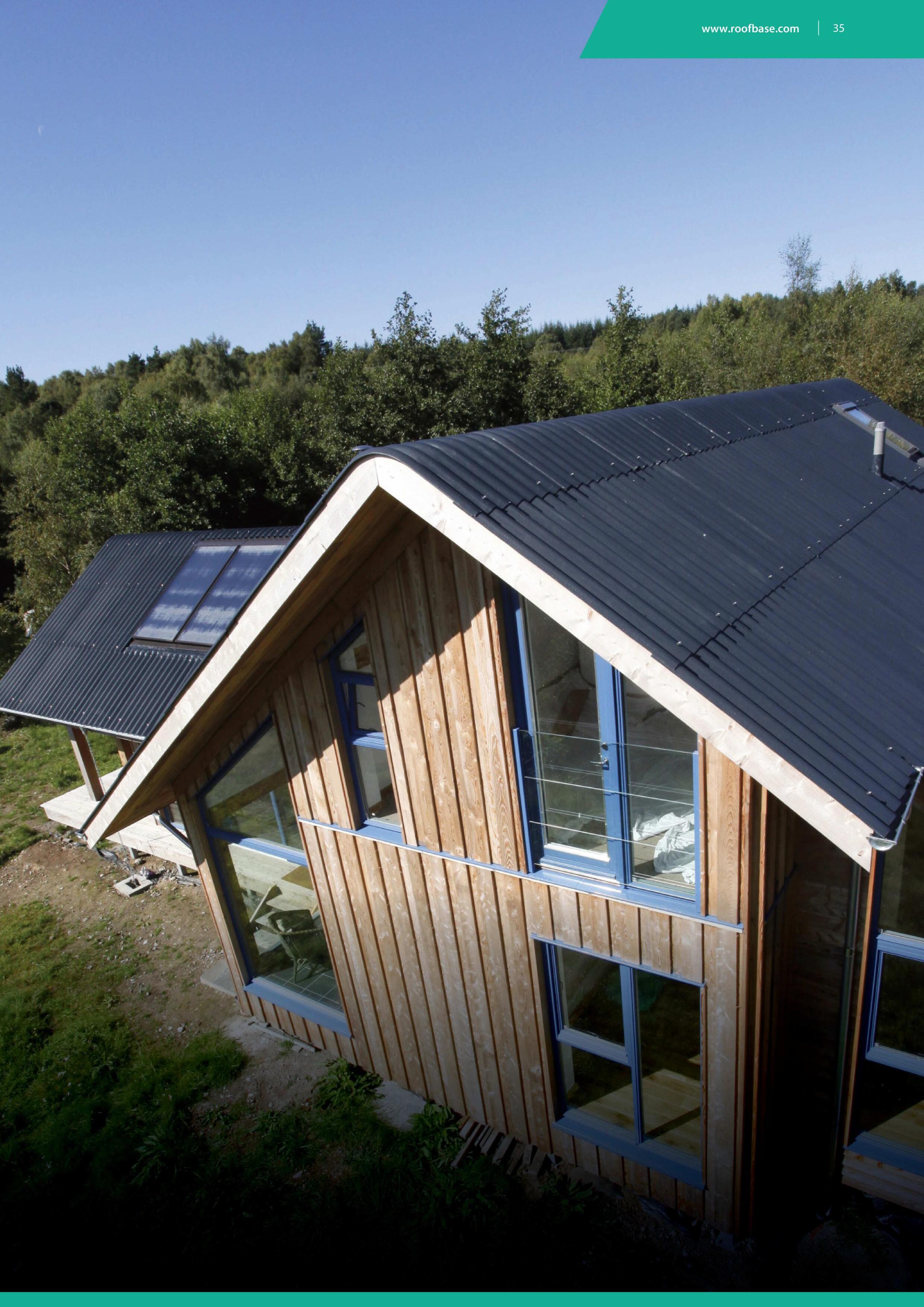
1 minute read
WORKING WITH MARLEY ETERNIT FIBRE CEMENT ROOFING SHEETS
PREPARATION
Prior to sheeting, a responsible person should check that all purlins and rails are connected securely. Measurements should be taken to ensure that the structure and purlins are true and level to receive the sheeting. In particular, a check should be made that the purlins are spaced correctly for the right end lap, and that the eaves purlin provides an overhang into the gutter not exceeding 350mm (Profile 6) and 250mm (Profile 3). When the sheeting layout is being planned, care should be taken to ensure that the verge sheets are cut so that the outside edge coincides with a crown rather than a trough in the corrugations. This enhances the weather protection and can reduce the width of the flashings.
SAFETY AT WORK
The recommendations of HSG 33 should be followed at all times:
A safe place of work should be provided.
Health and Safety Provisions should comply with current regulations and be suitable for working at height. The use of safety nets as fall arrest equipment should always be considered.
Profile 6 sheets, when new and first installed in accordance with our recommendations, can be classified as a non- fragile Class C roof assembly in accordance with ACR[M]0. Once the roof has been completed and the netting/ scaffolding removed, if any subsequent access is required on the roof, the sheets should be treated as a fragile assembly.
Cdm Regulations
Specifiers have an obligation under the Construction (Design and Management) Regulations 2015 to identify and evaluate the health and safety implications of all products and construction methods required by their design.
INSTALLATION
The following guidelines should always be observed:
Sheets should be installed smooth surface up.
All fixing holes should be drilled, not punched, and adequate clearance (2mm minimum) provided for the fixing shank.
There should be two fixings per sheet per purlin or fixing rail at the point shown on pages 10 and 11.
Always lay the sheets in vertical tiers from the eaves to the ridge.
Always fix sheets fully before moving on.
To minimise dust, cut sheets with a handsaw or slow speed reciprocating power saw. The use of angle grinders is not recommended.
Avoid deflecting a sheet whilst attempting to force a bearing.
Do not step on side lap corrugations.
Where regular access is required to reach roof lights, ventilation and service ducts, properly constructed walkways should be provided.



